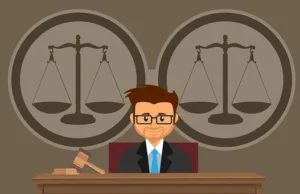The transitional right gives patent proprietors the possibility, for a period of at least seven years and a maximum of fourteen years, to opt out of the system, out of the jurisdiction of the European Patent Court, by declaring opt-outs. However, the national courts having jurisdiction in this case will presumably apply the UPCA during the transitional period.
If an action has already been brought before the European Patent Court, an opt-out can no longer be declared. If an opt-out has been declared and a national action is then filed, the path to the European Patent Court can no longer be followed.
The Sunrise Period
The European Patent Office will make it possible to file applications for the grant of patents with unitary effect for the contracting states participating in the system as early as 01 January 2023
On 1 March 2023 , the so-called "sunrise" period will startduring which requests for opting-out pending European patent applications as well as granted European patents can be filed in order to exclude the effects of the new system on these IP rights already at the start of the European Patent Court.
European patents fall under the UPC without exception, which applies to all existing European patents. Those who wish to exclude the jurisdiction of the European Patent Court for their European patents during the transitional period should declare an opt-out, separately for each European patent, to the Court Registry in due time.
Those who decide to opt-out of individual, several or all existing European patents already now for strategic reasons should make this declaration already during the sunrise period. Opt-out requests are a defensive strategy in that they protect European patents from being revoked by a single action at the European Patent Court, rather than having to litigate on a country-by-country basis.
What is the case for an opt-out:
The risk of a central invalidity action before the European Patent Court as well as the risk resulting from the lack of any case law and the lack of practical experience with this completely new court are avoided.
On the other hand, what are the advantages of bringing an action before the European Patent Court?
- According to the established timetable for first- and second-instance proceedings, actions are to be legally concluded after two, at most two and a half years. There is no appeal instance and a remittal to the court of first instance is only provided for in exceptional cases.
- In many cases, the action concerns all validated parts of the European patent.
- Compared to the German system, somewhat lower costs are to be expected.
- Infringement and invalidity proceedings can be heard in one and the same action.
- The court system is exclusively tailored to patent litigation.
Possible strategies:
Opt-out for the entire portfolio of European patents.
No opt-out for stronger patents, i.e. patents that are easier to defend if their validity is challenged (the risk of lack of case law and practical experience with the European Patent Court may be less relevant).
Opt-out for weak patents potentially vulnerable to invalidity actions (to avoid the risk of centralized invalidity proceedings before the European Patent Court).
An opt-out for a European bundle patent can also be subsequently withdrawn by the patent proprietor during the transitional period, but only as long as an action has not already been brought before a national court.
Filing opt-out requests requires active, relatively complex steps in the designated software and should therefore usually be filed through a European patent attorney.






